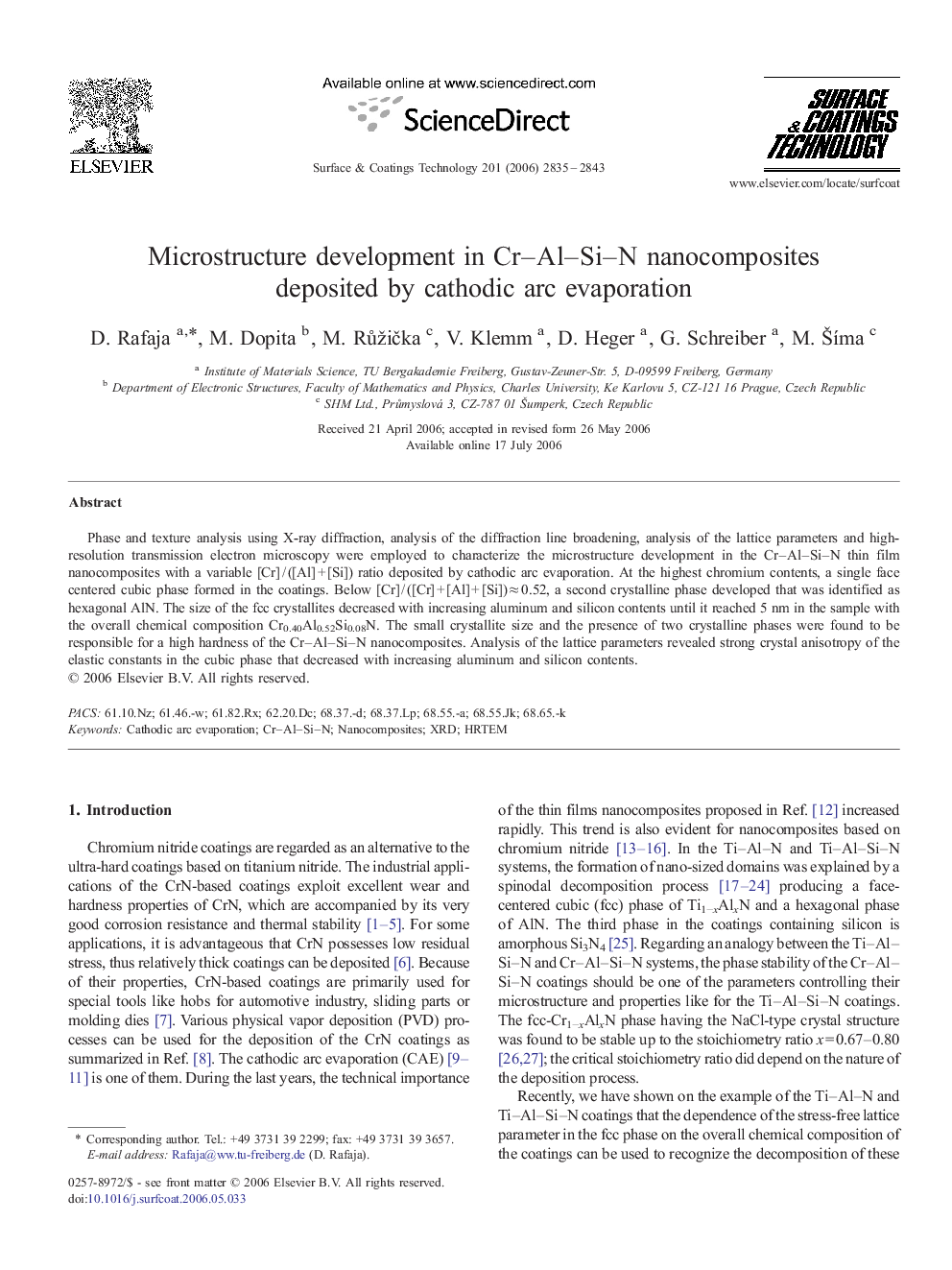| Article ID | Journal | Published Year | Pages | File Type |
|---|---|---|---|---|
| 1663401 | Surface and Coatings Technology | 2006 | 9 Pages |
Phase and texture analysis using X-ray diffraction, analysis of the diffraction line broadening, analysis of the lattice parameters and high-resolution transmission electron microscopy were employed to characterize the microstructure development in the Cr–Al–Si–N thin film nanocomposites with a variable [Cr] / ([Al] + [Si]) ratio deposited by cathodic arc evaporation. At the highest chromium contents, a single face centered cubic phase formed in the coatings. Below [Cr] / ([Cr] + [Al] + [Si]) ≈ 0.52, a second crystalline phase developed that was identified as hexagonal AlN. The size of the fcc crystallites decreased with increasing aluminum and silicon contents until it reached 5 nm in the sample with the overall chemical composition Cr0.40Al0.52Si0.08N. The small crystallite size and the presence of two crystalline phases were found to be responsible for a high hardness of the Cr–Al–Si–N nanocomposites. Analysis of the lattice parameters revealed strong crystal anisotropy of the elastic constants in the cubic phase that decreased with increasing aluminum and silicon contents.
